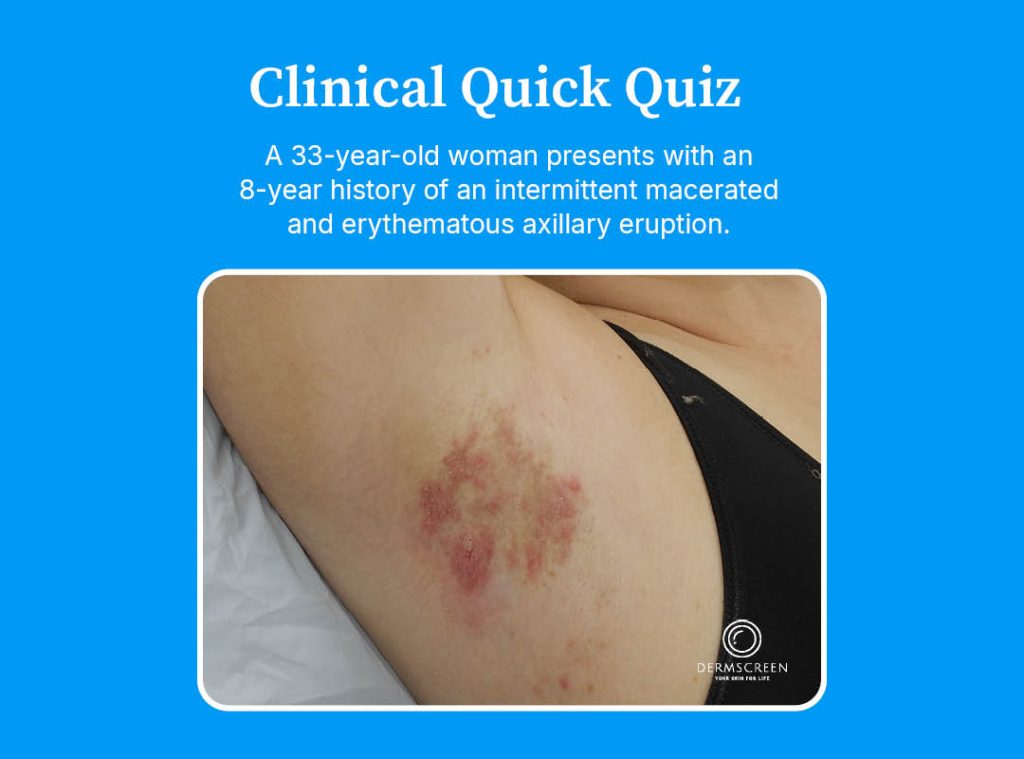Articles / Clinical Quick Quiz – What is the most likely diagnosis for this erythematous axillary eruption?


writer
Consultant Dermatologist and Medical Director at Dermatology Junction and DermScreen; Fellow of the Australasian College of Dermatologists
0 hours
These are activities that expand general practice knowledge, skills and attitudes, related to your scope of practice.
0.5 hours
These are activities that require reflection on feedback about your work.
0 hours
These are activities that use your work data to ensure quality results.
These are activities that expand general practice knowledge, skills and attitudes, related to your scope of practice.
These are activities that require reflection on feedback about your work.
These are activities that use your work data to ensure quality results.
Choose the diagnosis you think is most likely from the list below. Login to submit your answer and find out the correct diagnosis.
A 33-year-old woman presents with an 8-year history of an intermittent macerated and erythematous axillary eruption.

Based on this educational activity, complete these learning modules to gain additional CPD.

Allergen Introduction – Practical Tips for GPs

Obstructive Sleep Apnoea

writer
Consultant Dermatologist and Medical Director at Dermatology Junction and DermScreen; Fellow of the Australasian College of Dermatologists



Very overestimated
Moderately/slightly overestimated
Quite accurate
Moderately/slightly underestimated
Very underestimated
Listen to expert interviews.
Click to open in a new tab
Browse the latest articles from Healthed.
Once you confirm you’ve read this article you can complete a Patient Case Review to earn 0.5 hours CPD in the Reviewing Performance (RP) category.
Select ‘Confirm & learn‘ when you have read this article in its entirety and you will be taken to begin your Patient Case Review.





